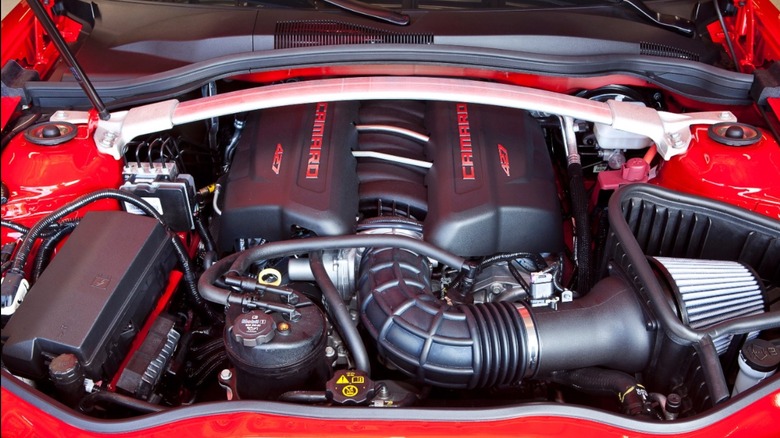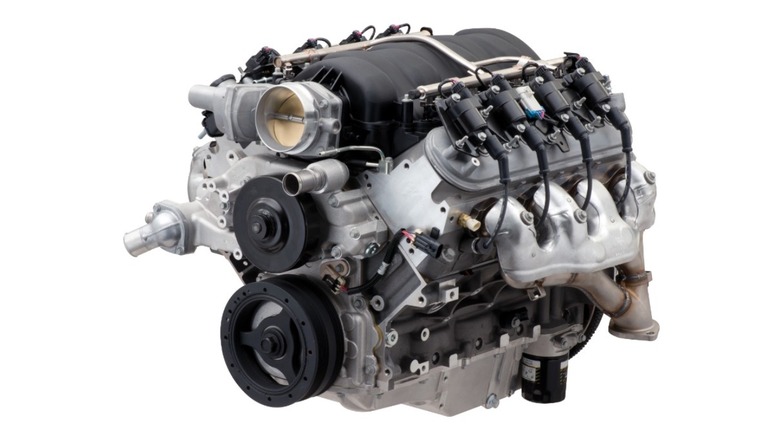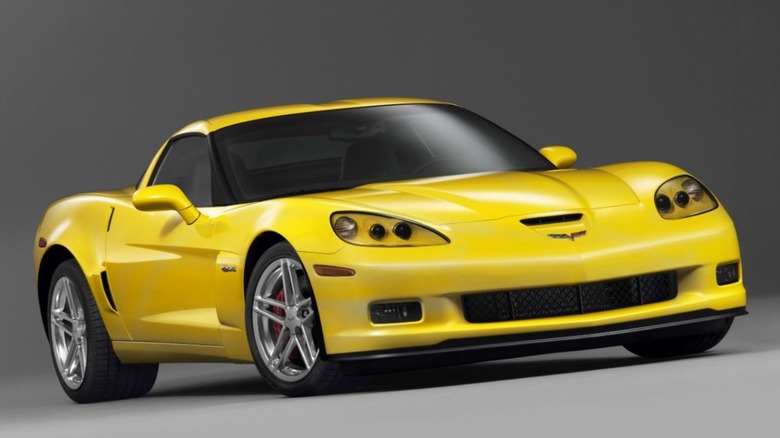What Separates GM's LS7 Engine From Other LS Models (And Which Vehicles Used It)?
When it comes to legendary V8s, several of GM's LS engines deserve a spot near the top. Since GM introduced its third generation of small-block V8 engines in 1997, the LS has been a fan favorite amongst domestic sports car lovers and aftermarket tinkerers alike. Reliability, modifiability, and raw power are hallmarks of every LS engine, but the GM LS7 represents the LS engine series in its purest and most potent form.
When the LS7 arrived in the Corvette Z06 in 2006, it became a record-setter in several ways. At launch, it was the largest production small-block ever produced, with a displacement of 7.0 liters or 427 cubic inches. It was also the most powerful naturally aspirated V8 production engine in the world at the time, producing 505 horsepower and 470 lb-ft of torque. While the LS7 lost the title of most powerful LS engine in 2009 to the supercharged LS9, it remains the highest displacement motor in the series.
While the LS7 shares its overall design with other engines in the Gen IV small-block family, it is infused with Le Mans-tested features and was handled with more care during production than any other GM engine at the time, setting it apart from most of the other engines in the LS lineup. Not only is the LS7 one of the best engines in GM's catalog, some enthusiasts argue that it is one of the best engines ever made.
The LS7 was designed after a race engine
The LS7 was the result of extensive track time, with a design directly influenced by GM's accomplishments in GT racing. As a result, the LS7 was built with performance-optimized materials and unique, track-focused tech that isn't found on many other LS engines.
The production of the LS7's decked block was informed using data collected from the Le Mans-winning Corvette CR-5's own LS7.R race engine. Keeping with the theme of using only race-ready parts, the LS7 features titanium connecting rods, a forged steel crankshaft, billet steel main bearing caps, and race-derived high-flow cylinder heads.
The foundation of the LS7 engine is its dry sump oiling system, which is technology usually only reserved for track cars and motorcycles. It uses external oil tanks and a two-stage oil pump to circulate oil continuously through the engine, giving the LS7 some distinct advantages over other LS engines.
Engine-destroying oil starvation problems are a thing of the past for the LS7 since high-G turns don't affect dry sump oiling systems. The LS7's lack of a bottom-mounted oil pan also allows the engine to sit lower in the chassis, reducing the center of gravity and improving handling. While both the LS9 and Grand Sport LS3 also used a dry sump system, the LS7 was the first to do it. The dry sump system and other highly precise requirements made it a tough engine for GM to produce on an assembly line, so they built every LS7 by hand at the GM Performance Build Center in Wixom, Michigan.
The LS7 powered some intensely fast cars and a helicopter
While the LS7 was used in a limited list of GM vehicles between 2006 and 2015, its most notorious placement was in the C6 Corvette. It was introduced in the 2006 Corvette Z06, where it produced 505 horsepower and rocketed the top-of-the-line Vette from 0-60 in 3.6 seconds, according to a Car and Driver test. The LS7 remained a fixture in the Corvette Z06 from 2006 until 2013 when the C6 generation was phased out in favor of the C7 generation Corvette in 2014. In the last year of the C6's production, Chevy also used the LS7 in the limited-run 427 Convertible, which was the only time that the 7.0L V8 was offered in a drop-top.
While the Corvette lineup dropped the LS7 in 2013, the Camaro carried the legendary V8's legacy further. The Z/28 Camaro made a reappearance for the 2014 model year and received a fitting engine for the occasion, the 7.0L LS7. The fifth generation Z/28 Camaro was only available from 2014 to 2015 but certainly made its mark, winning MotorTrend's Best Driver's Car Award in 2014 against stiff competition.
The LS7's final application came in a very unique package. Instead of powering wheels, it powered a rotor in the Vertical Aviation Hummingbird helicopter. The helicopter made use of the LS7's dry sump oiling system to mount the engine at a 45-degree angle behind the cabin. In helicopter trim, the LS7 only produced 280 horsepower, a far cry from its capabilities but still enough to get it off the ground.


